There are smart people on social media. Brilliant people.
Yet, many of them have swallowed the bait whole. They believe that the stock market can only move one direction. Up, up, and away.
Everyday folks too. Young, old, educated, uneducated… it does not matter. Buy every dip because asset prices will always rise.
To what or to whom can we credit for the ubiquitous groupthink? Despite centuries of adverse economic outcomes and financial collapses?
Money creation by the Federal Reserve.
I have tried to disabuse a number of intelligent colleagues by offering up data, facts, and witty banter. Alas… several view me as ‘out of touch.’
Here is a snippet between myself and a well-regarded financial personality with close to 1,000,000 followers:
—
DB: Been saying this for years. As long as investors understand that the Fed will save the day — which we already know that they can and that they will — market will climb higher. The Fed can taper (slow down money creation) or raise lending rates, but it is all meaningless. Nobody fears risk because the Fed can and will reverse course if they need to push stock prices higher. Buy every pullback!
GG: Sooooooo… permanent plateau?
DB: Invoking 1929? Look, the Fed can print money to buy bonds to depress borrowing costs. They can print money to buy corporate bonds directly. If they need to reassure, they will even buy stocks directly. This time really is different because the Fed has removed risk entirely.
GG: Your assumption is that any amount of money creation will be passively accepted by investors indefinitely… without a loss of confidence in the policies or the currency. That flies in the face of historical precedent. It may even fly in the face of common sense.
—
Is it possible that I am the one who has lost touch? Sure. That said, it is worthwhile to examine certain truths.
For instance, there used to be a small percentage of companies that insiders refer to as ‘zombies.’ These are corporations that make so little money, they cannot pay back their debts, let alone even the interest on those debts anymore. Call it 8%-10%.
Things changed dramatically over the last few years. The Fed has been bailing out zombies by manipulating the cost of borrowing to ridiculous depths. Now zombies represent nearly one-quarter (24%) of all public corporations.
24%? That makes the tech bubble stupidity of 2000 look sensible.
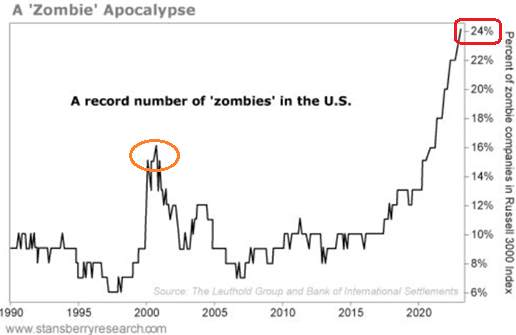
So, zombies will never go bankrupt because money-losing entities can always find a friend in the Fed? That’s the thesis for most experts when they insist that the Fed can always prop up stocks when necessary.
According to today’s experts, the price one pays for shares of stock do not have importance. Not really. The Federal Reserve is so wondrous, you’re guaranteed to win regardless of the price that you pay today.
Of course, history does not agree. Every valuation metric is screaming an irrational exuberance not unlike the one that ended disastrously in 2000.
Market-cap-to-world GDP:
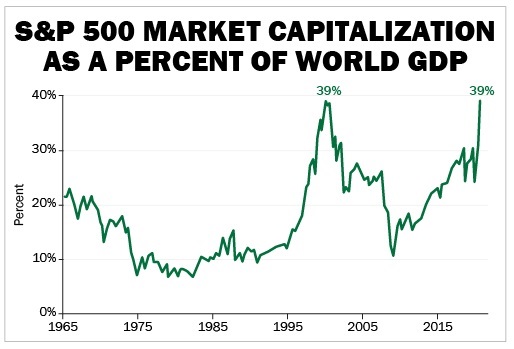
10 years of trailing profits a la the cyclically-adjusted price-to-earnings ratio:
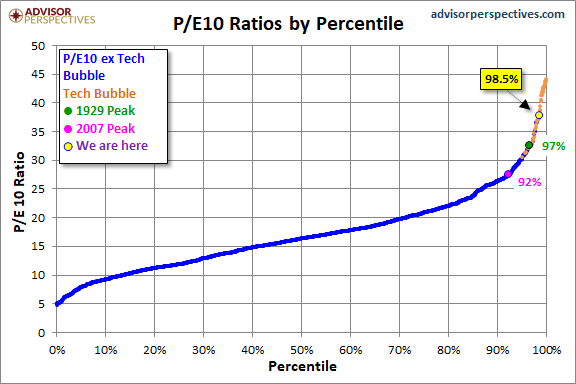
Price-to-sales as well as traditional PE:
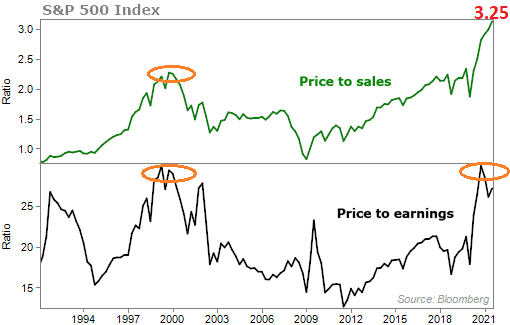
Indeed, the reality that investors can ignore 140-plus years of information is difficult to fathom. For example, reversion to the mean, or mean reversion, is an iron law of financial markets. It does not bend, break, or mislead.
Mean reversion is an inevitability whereby prices will revert to the long-run average for an entire data set. And right now, the S&P Composite is an astronomical 180% above trend.
For perspective, the market was 79% above trend in 1929. It was 122% above trend in 2000. Here in 2021? A mind-bending 180%!
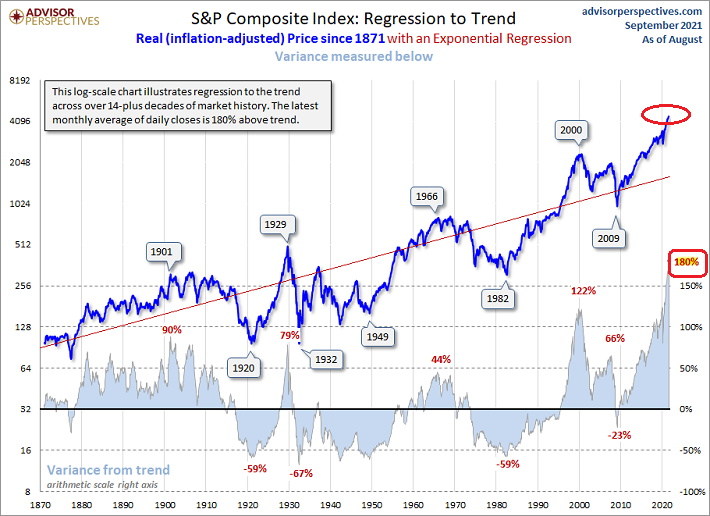
Are there any signs that the insanity might end soon? Perhaps.
The S&P 500 may be hitting record highs on an every-other-day basis. However, the underlying market is seeing fewer and fewer stocks advancing relative to stocks that are declining. The New York Stock Exchange’s Advance-Decline (A/D) Line has been flat all summer long.
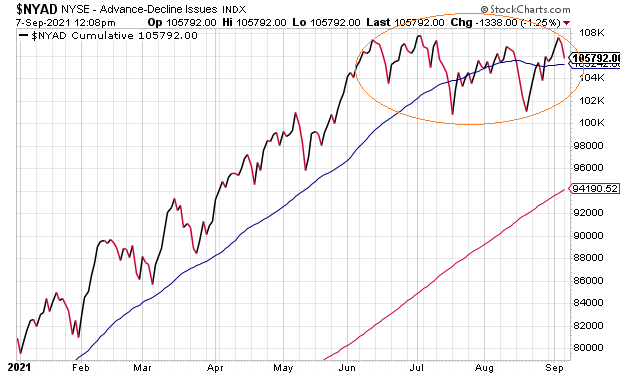
The reason the large capitalization indexes (e.g., S&P 500, Nasdaq, Dow, etc.) keep setting records is largely attributable to a handful of companies. Literally a handful.
Apple, Microsoft, Facebook, Google and Tesla. If confidence ever cracks on these stalwarts, the stock bubble would likely experience an ‘unforeseen’ comeuppance.
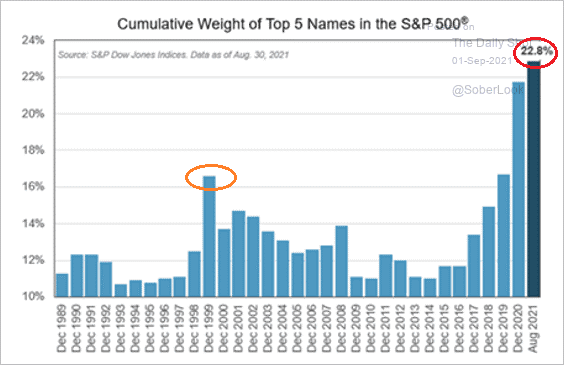
Would you like to receive our weekly newsletter on the stock bubble? Click here.
